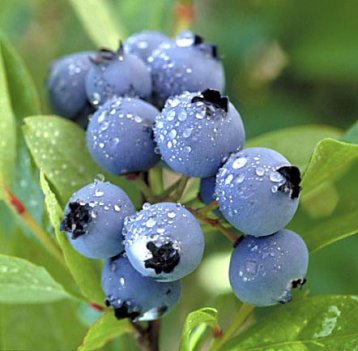 For the last several years, I have utilized the website of the Environmental Working Group (EWG) to assess the level of chemical exposure for everything from fruits and vegetables to cosmetics and skincare products that I frequently purchase. I have found their database of information to be extremely helpful over the years and it has definitely influenced my buying decisions on many occasions. For example, I stopped buying some organic vegetables and switched to locally grown, conventional produce if these items were listed as low to no spray by EWG. I even recommended their website in one of my blogs last summer, Organic Is Passe?
For the last several years, I have utilized the website of the Environmental Working Group (EWG) to assess the level of chemical exposure for everything from fruits and vegetables to cosmetics and skincare products that I frequently purchase. I have found their database of information to be extremely helpful over the years and it has definitely influenced my buying decisions on many occasions. For example, I stopped buying some organic vegetables and switched to locally grown, conventional produce if these items were listed as low to no spray by EWG. I even recommended their website in one of my blogs last summer, Organic Is Passe?
I am now not sure that EWG actually deserved that recommendation based on some of the information this group has been putting out recently. In a Oct 2008 report on bottled water, for instance, EWG trashed Zephyrhills Water (a reputable company with a wonderful, artesian water source not all that far from where I live). The data published by EWG is not in line with published water reports. Callers to EWG asking about this questionable data are given the runaround and told that the water reports “are done outside the office” (red flag) and that there is no one the caller can speak with to verify the accuracy of the results. On the flip side, callers to Zephyrhills Water are assured that the EPA requires the water reports be made public and that there is an error in the EWG report. Zephyrhills’ answer to the EWG report can be found at this link.
The second piece of research put out by EWG recently that has given me pause concerns the updated “dirty dozen” included in EWG’s Shoppers Guide to Pesticides. The dirty dozen list identifies the fruits and vegetables that expose the consumer to the highest pesticide and chemical residues. This year, domestic blueberries made the list and were actually ranked in the top five for dirtiest produce! This comes as a complete shock to me as there are many blueberry farms near where I live and not one of the farmers I have ever talked to sprays pesticides on their blueberry bushes even if the crop is not organically maintained. I take my family blueberry picking on occasion and I have never worried about my children picking the blueberries directly off the bushes and eating them. Even one organic blueberry farmer in my local area commented that she can’t think of anything that conventional blueberry growers would be using that is toxic and that the only reason “some are not totally organic would be the chemical fertilizer some use through their low volume irrigation systems–and that wouldn’t make them high on a list of chemical use.”
So, what’s up with EWG? Could it be that the respect that the green community has for EWG’s research has caused them to sell out their reputation to some high profile, anonymous contributors who seek to use this stellar reputation to manipulate consumer spending? I have no idea and hope that someone out there can comment on this blog and shed some light on the questionable EWG info being published recently. If you have any information to show that I am mistaken, please comment. I sincerely hope that I am wrong in my assessment, but feel that my concerns about EWG need to be aired for others to investigate for themselves.
In the meantime, until I am reassured somehow that EWG has not, in fact, gone to the Dark Side, I am using the “Good Guide,” a startup founded by a professor of environmental and labor policy at the University of California, Berkeley to assess the toxic load of the everyday products I buy. The Good Guide uses a simple 10 point rating system and 75,000 products have been rated as of March 2010. The Good Guide has companies like Clorox looking for help with their poor rankings – this is a good sign for objectivity in the rankings system used.
Isn’t simple objectivity what we as consumers are ultimately looking for? If EWG has lost it in the objectivity department, it’s nice to know that there are startups like the Good Guide ready to step into their shoes.
Sarah, The Healthy Home Economist







FINALLY, someone else noticed this!!! I have been looking at both ewg and goodguide and couldn’t figure out why certain things had contrasting ratings. like babyganics laundry detergent. it gets an f on ewg, but has a health score of 8 on the goodguide . I don’t understand how something that is supposed to be all natural can have a worse rating than tide and other chemical riddled products!
You may have been too quick to judge on this one. My hub is a chemical salesman, and he says that everything they spray on strawberries they spray on blueberries.
I began to question some of EWG’s viewpoints and motives when I read this blog post by its founder stating that concerns about the recent food safety bill (S 510) having over-burdensome and detrimental effects on small family farms amounted to “internet rumors”, and that the bill sufficiently protects small farms and producers:
When contacted, EWG refused to send an action alert to members asking to push for protections of small farms like those in the Tester – Hagan amendment.